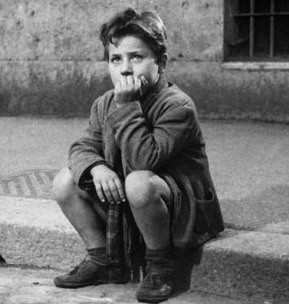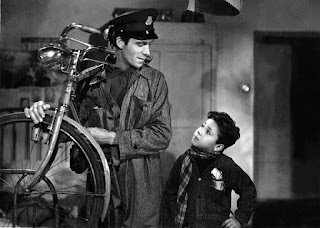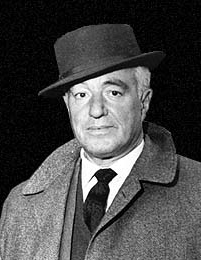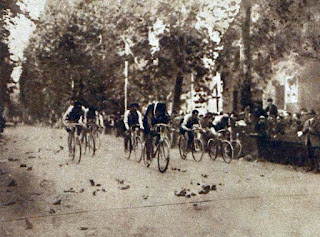Tazio Nuvolari – racing driver
Man from Mantua seen as greatest of all time
Tazio Nuvolari, the driver many regard as the greatest in the history not only of Italian motor racing but perhaps of motorsport in general, was born on this day in 1892 in Castel d’Ario, a small town in Lombardy, about 15km (9 miles) east of the historic city of Mantua. Known for his extraordinary daring as well as for his skill behind the wheel, Nuvolari was the dominant driver of the inter-war years, winning no fewer than 72 major races including 24 Grands Prix. He was nicknamed Il Mantovano Volante - the Flying Mantuan. From the start of his career in the 1920s, Nuvolari won more than 150 races all told and would have clocked up more had the Second World War not put motor racing in hibernation. As it happens, Nuvolari’s last big victory came on September 3, 1939, the day the conflict began, in the Belgrade Grand Prix. When he died in 1953 from a stroke, aged only 60, his funeral in his adopted home city of Mantua attracted at least 25,000 people. His coffin was placed on a car chassis pushed by legendary drivers Alberto Ascari, Luigi Villoresi and Juan Manuel Fangio, at the head of a mile-long procession. Read more…
_________________________________________________________
Sofonisba Anguissola – Renaissance artist
Portrait painter paved the way for other women artists
Painter Sofonisba Anguissola died on this day in 1625 in Palermo at the age of 93. As a young woman Anguissola had been introduced to Michelangelo in Rome, who had immediately recognised her talent. She served an apprenticeship with established painters, which set a precedent for women to be accepted as students of art in the 16th century. Her success later in life paved the way for other women to pursue serious careers as artists. Many of her paintings can still be seen in prestigious galleries all over the world. Anguissola was born in Cremona in Lombardy in 1532 to noble parents who believed they had a connection to the ancient Carthaginians and named their first daughter after the tragic Carthaginian figure, Sophonisba. All their children were encouraged to cultivate their talents and five of the daughters became painters, but Sofonisba was the most accomplished and became the most famous. Sofonisba was 14 when she was sent with her younger sister, Elena, to study with Bernardino Campi, a respected portrait and religious painter. When he moved to another city, she continued her education with Bernardino Gatti. Read more…
__________________________________________________________
Maurizio Margaglio - ice dancer
Multiple champion remembered for famous fall
The ice dancer Maurizio Margaglio, who enjoyed a prolifically successful partnership with Barbara Fusar-Poli from the mid-1990s to the early part of the new century, was born on this day in 1974 in Milan. Margaglio and Fusar-Poli were national champions of Italy nine times and in 2001 they became the first Italian pair to become World champions, winning in Vancouver ahead of the defending champions Marina Anissina and Gwendal Peizerat of France. They were European champions the same year, during a remarkable season in which they won every event they entered. Yet they never won an Olympic title in three attempts, and as well as their successes they are remembered as much for the calamity that befell them at their home Olympics in Turin in 2006. In their first appearance in international competition for four years, Margaglio and Fusar-Poli were in the gold medal position, leading by a full half-point over the Russian favourites and two-time World champions, Tatiana Navka and Roman Kostomorav, after the opening compulsory dance section of the competition. Yet just seconds away from potentially consolidating their lead in the original dance section, disaster struck. Read more…
__________________________________________________________
San Giuseppe Moscati - doctor
Brilliant young doctor recognised for his kindness
Doctor and scientist Giuseppe Moscati was beatified by Pope Paul VI on this day in 1975. Giuseppe was renowned for his kindness and generosity to his patients and even before his death people talked of ‘miracle’ cures being achieved by him. He was canonised by Pope John Paul II in 1987 and his feast day is 16 November. Moscati was born into a big family in Benevento in 1880. His father, a lawyer and magistrate, was active in the church and Giuseppe inherited his piety. The family later moved to Naples and Giuseppe enrolled in the medical school of the University of Naples in 1897. On graduating he went to work in a hospital but continued with his brilliant scientific research and attended Mass frequently. When Vesuvius erupted in 1906 he helped evacuate all the elderly and paralysed patients before the roof collapsed on the hospital under the weight of the ash. He worked tirelessly to research ways to eradicate cholera in Naples and personally cared for many of the soldiers wounded in the First World War. He was compassionate to the poor and often gave them money as well as free medical treatment and a prescription. Read more…

































